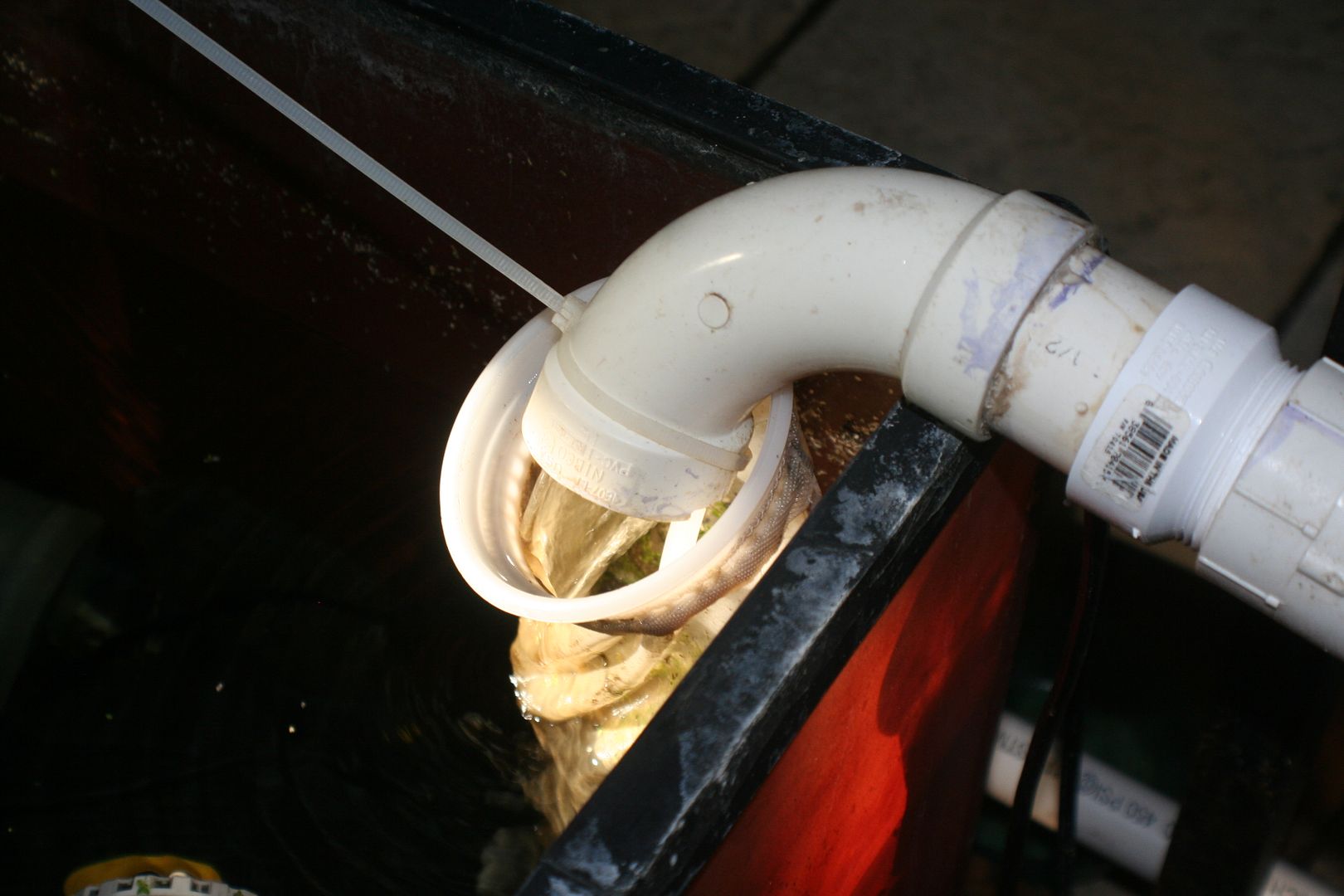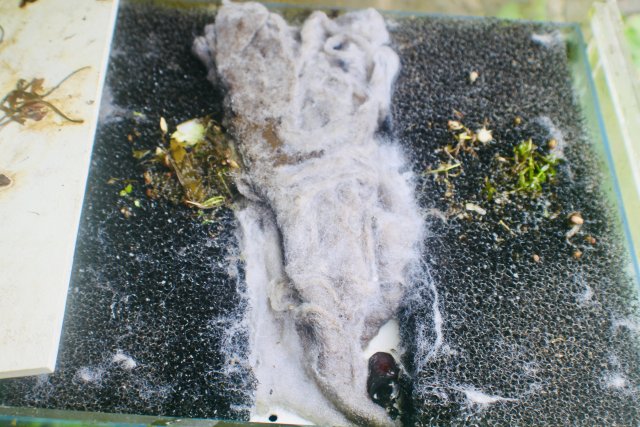There is a lot of talk about which bio-media is best.
There are also claims that one is much better than the rest.
But how would we know?
The goal of Bio-media is not to make a tank look aesthetically better, clearer, or cleaner.
Bio-media is in our tanks to support a population of bacteria that eat ammonia and nitrite. In reality basically bio-media, and its inhabitants, do nothing else. They don’t filter out particles or fish feces, that’s what mechanical media is for.
You can’t see ammonia or nitrite in the water.
The only way you will know that the population of beneficial bacteria is sufficient in your tank is if……
your fish aren’t dying,
they are healthy,
or if you use, one of the commercial tests for ammonia and/or nitrite that are available.
Clear looking, apparently clean, water can be toxic with ammonia, and turbid, brown muddy water can be healthy.
The most common tests are colorimetric chemical tests, and colorimetric comparator strips (or paper tests).
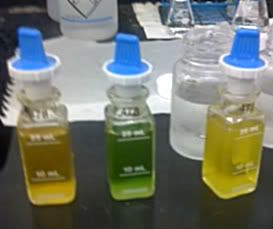
Depending on what chemical is used as a reagent (indicator) , ammonia will show up as a certain color (often times green)
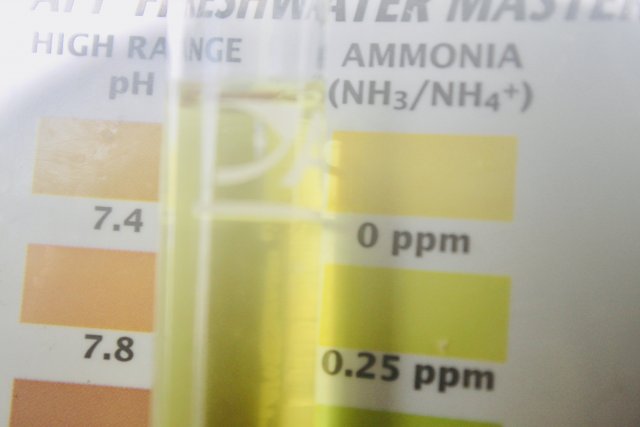
Whether one is better or worse tests is subjective.
If you use proper techniques of rinsing and measuring amounts in tubes, the liquid chem tests are great. (you are dealing with parts per million, a tiny stain on a tube, or few extra drops more or less can change everything.
If you don’t properly rinse tubes, or measure sloppily, or not abide by the proper timing and shaking, they can be inaccurate. If they are out of date, they may be inaccurate.
I rinse tubes 3 times in DI or RO water after each sample, and set them upside down to drain after use. A left over drip can leave a residual that can skew results.

Test strips are easy, you dip, wait the proper amount of minutes to read, and get a reading. They can be accurate, if well made.
If they are out of date, or compromised by dampness, they can give false results.
As a retired chemist in a water quality lab, I have found both can be accurate.
Most active ammonia and nitrite consuming bacteria are sessile, which means they live as a bio-film on objects, and do their best work if oxygenated water containing ammonia and nitrite, is flowing over and around them, they also do best under subdued lighting, or in the dark.
They can be totally submerged in boxes, compartments, in tall columns, or on trays that are under tank water flows, drips, or sprays. Anything holding bioballs, ceramic rings, or lava rock, bio-wheels (rotating biological contactors) , porous rock, sponges will all grow beneficial bacteria.



Old hair curlers, old toothbrushes, anything solid with enough space can be bio-media. Just as any solid surface including rocks, waterlogged wood, and the glass sides of the tank will grow the bacteria.
Old tank water is a poor source of beneficial bacteria, and almost useless to cycle your tank, these bacteria are not planktonic.
Speaking of cycling, it is the process of acquiring that population of ammonia and nitrite consuming bacteria.
Putting water in a tank, with gravel, turning on a filter, and letting the tank sit filter running a couple days, is “not” cycling.
To grow the amount of bacteria you need, to consume the ammonia you fish will produce, you must feed them.
Either by adding a sacrificial fish that may die from its own ammonia,…
or fish less cycling by adding pure ammonia until the population of bacteria is reached, this can take 6 to 8 weeks.
Some people add a shrimp from the market and let it rot, that process process produces the ammonia the bacteria need.
Then you test until ammonia amounts spikes and falls to 0, nitrite spikes and fall to 0, and nitrate shows up on your tests.
So how much bio-media do you need?
This depends on the amount of fish in your tank, its size and the size of the fish. If you overfeed, (sometimes what you feed), and how often you change water, and clean filters (bio-media can be suffocated if plugged with gunk).
A 100 gallon tank with two adult oscars, will need much more bio-media than a 100 gallon tank with 50 guppies, or 5 angel fish, because of the amount of waste produced by the larger fish.
And the visible waste is not the only factor here.
Every time a fish respirates invisible ammonia is being produced and passes out thru the gills.
At the moment, my bio-filtration is a combination of porous stone, bio-balls, Porett foam, and old sea shells.
It has two connected sumps (about 20 gallons each) the 180 gallon tank holds about 15 fish, most around 5", only one 8", the sumps (filtration also contain shrimp, higher plants, and algae) so may also be considered refugiums, pump is roughly 2400 GPH.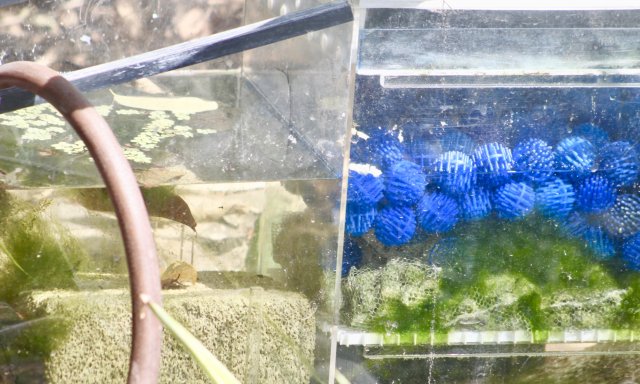
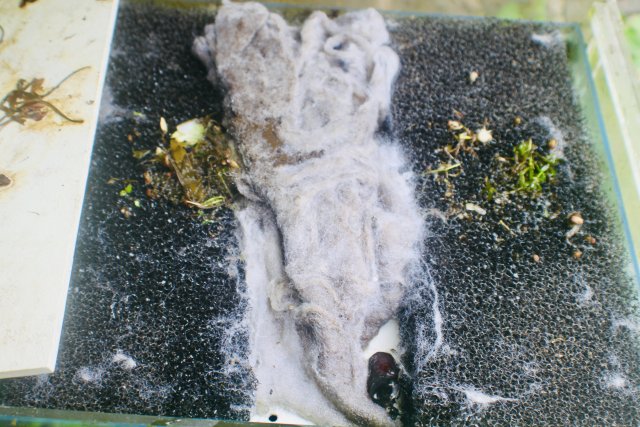
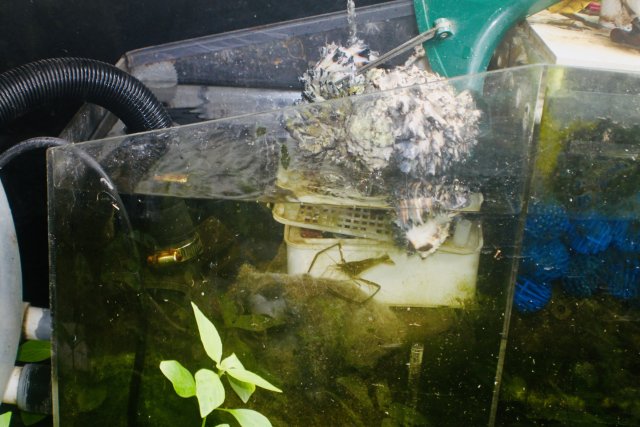
There are also claims that one is much better than the rest.
But how would we know?
The goal of Bio-media is not to make a tank look aesthetically better, clearer, or cleaner.
Bio-media is in our tanks to support a population of bacteria that eat ammonia and nitrite. In reality basically bio-media, and its inhabitants, do nothing else. They don’t filter out particles or fish feces, that’s what mechanical media is for.
You can’t see ammonia or nitrite in the water.
The only way you will know that the population of beneficial bacteria is sufficient in your tank is if……
your fish aren’t dying,
they are healthy,
or if you use, one of the commercial tests for ammonia and/or nitrite that are available.
Clear looking, apparently clean, water can be toxic with ammonia, and turbid, brown muddy water can be healthy.
The most common tests are colorimetric chemical tests, and colorimetric comparator strips (or paper tests).

Depending on what chemical is used as a reagent (indicator) , ammonia will show up as a certain color (often times green)

Whether one is better or worse tests is subjective.
If you use proper techniques of rinsing and measuring amounts in tubes, the liquid chem tests are great. (you are dealing with parts per million, a tiny stain on a tube, or few extra drops more or less can change everything.
If you don’t properly rinse tubes, or measure sloppily, or not abide by the proper timing and shaking, they can be inaccurate. If they are out of date, they may be inaccurate.
I rinse tubes 3 times in DI or RO water after each sample, and set them upside down to drain after use. A left over drip can leave a residual that can skew results.

Test strips are easy, you dip, wait the proper amount of minutes to read, and get a reading. They can be accurate, if well made.
If they are out of date, or compromised by dampness, they can give false results.
As a retired chemist in a water quality lab, I have found both can be accurate.
Most active ammonia and nitrite consuming bacteria are sessile, which means they live as a bio-film on objects, and do their best work if oxygenated water containing ammonia and nitrite, is flowing over and around them, they also do best under subdued lighting, or in the dark.
They can be totally submerged in boxes, compartments, in tall columns, or on trays that are under tank water flows, drips, or sprays. Anything holding bioballs, ceramic rings, or lava rock, bio-wheels (rotating biological contactors) , porous rock, sponges will all grow beneficial bacteria.



Old hair curlers, old toothbrushes, anything solid with enough space can be bio-media. Just as any solid surface including rocks, waterlogged wood, and the glass sides of the tank will grow the bacteria.
Old tank water is a poor source of beneficial bacteria, and almost useless to cycle your tank, these bacteria are not planktonic.
Speaking of cycling, it is the process of acquiring that population of ammonia and nitrite consuming bacteria.
Putting water in a tank, with gravel, turning on a filter, and letting the tank sit filter running a couple days, is “not” cycling.
To grow the amount of bacteria you need, to consume the ammonia you fish will produce, you must feed them.
Either by adding a sacrificial fish that may die from its own ammonia,…
or fish less cycling by adding pure ammonia until the population of bacteria is reached, this can take 6 to 8 weeks.
Some people add a shrimp from the market and let it rot, that process process produces the ammonia the bacteria need.
Then you test until ammonia amounts spikes and falls to 0, nitrite spikes and fall to 0, and nitrate shows up on your tests.
So how much bio-media do you need?
This depends on the amount of fish in your tank, its size and the size of the fish. If you overfeed, (sometimes what you feed), and how often you change water, and clean filters (bio-media can be suffocated if plugged with gunk).
A 100 gallon tank with two adult oscars, will need much more bio-media than a 100 gallon tank with 50 guppies, or 5 angel fish, because of the amount of waste produced by the larger fish.
And the visible waste is not the only factor here.
Every time a fish respirates invisible ammonia is being produced and passes out thru the gills.
At the moment, my bio-filtration is a combination of porous stone, bio-balls, Porett foam, and old sea shells.
It has two connected sumps (about 20 gallons each) the 180 gallon tank holds about 15 fish, most around 5", only one 8", the sumps (filtration also contain shrimp, higher plants, and algae) so may also be considered refugiums, pump is roughly 2400 GPH.



Last edited:



